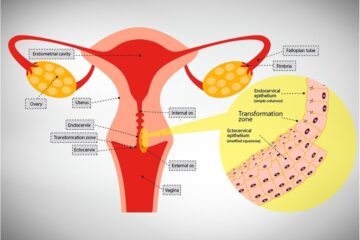The Arab uprising in 2010 and subsequent wars in the eastern Mediterranean region have had serious detrimental effects on the health and life expectancy of the people living in many of the 22 countries in the region, according to a major new analysis from the Global Burden of Disease Study 2013 (GBD 2013), published in The Lancet Global Health journal. In particular, the downward turns in life expectancy experienced by Syria, Yemen, Libya, Tunisia, and Egypt since 2010 are threatening to jeopardise health gains over the past two decades, warn the authors.
Between 2010 and 2013, Yemen, Tunisia, and Egypt lost about 3 months of life expectancy, whilst the war in Syria has erased 6 years off average life expectancy, with men expected to live to around 75 years in 2010, falling to about 69 years in 2013. For Syrian women, average life expectancy dropped from about 80 to 75 years over the same period.
“Life expectancy decline is traditionally regarded as a sign that the health and social systems are failing. The fact that this is happening in several countries indicates there is an immediate need to invest in health care systems”, says Ali Mokdad, Professor of Global Health at the Institute for Health Metrics and Evaluation (IHME) at the University of Washington, Seattle, USA, who led the research.
“Recent conflicts have shattered the basic infrastructure in a number of countries. As a result, millions of people are facing dire water shortages and poor sanitation that will lead to disease outbreaks, which must be controlled.”
The study reveals that many of the health gains achieved by countries in the region are at risk of slowing down. For example, there is now evidence that infant mortality rates are rising in some countries. Most strikingly in Syria where infant deaths fell at an average of 6.0% a year in the decade before 2010 in sharp contrast to the rise of 9.1% a year between 2010 and 2013.
The authors warn that the study represents a worrying picture of worsening health conditions across many eastern Mediterranean countries that are likely to have escalated since 2013 when the wars in Syria and Libya intensified and conflicts and unrest continued or broke out in Yemen, Lebanon, Afghanistan, Iraq, and Somalia.
“This region has historically seen improvements in life expectancy and other health indicators, even under times of stress. But the Arab uprising has evolved into complex wars that have killed hundreds of thousands of people and displaced millions”, explains Professor Mokdad. “Along with population growth and ageing, these ongoing conflicts have dramatically increased the burden of chronic diseases and injuries and many health workers have fled for safer shores. These issues will result in deteriorating health conditions in many countries for many years and will put a strain on already scarce resources.”
Using data from GBD 2013, Professor Mokdad and colleagues at IHME analysed patterns of ill health and death due to 306 diseases and injuries and calculated the contribution of 79 risk factors in the eastern Mediterranean region over 23 years (1990 to 2013).
Other key findings include:
- People in the eastern Mediterranean region are living longer on the whole, yet they face increasing threats from chronic diseases, with the leading causes of premature death and health loss shifting from communicable (e.g. diarrheal diseases and tuberculosis) to non-communicable diseases (e.g. heart disease, diabetes, and stroke).
- For example, deaths from diabetes rose from 12 to 19 per 100000 between 1990 and 2013. The authors warn that these trends will lead to additional strain on finances and human resources in a region where they are already scarce.
- Across the region, the growth of non-communicable disease risk factors such as high blood pressure (up 83% since 1990, responsible for 7.7% of disease burden in 2013) and obesity and overweight (up 28%; 7.5%) should be a priority for the region and will require large-scale prevention measures, say the authors.
- Heart disease was the number one cause of death in 2013 (up 17%; responsible for around 9.5% of all deaths in 1990 and 15% in 2013) overtaking diarrhoeal diseases (9.8% of all deaths in 1990 to 3.8% in 2013) and lower respiratory infections (9.7% to 5.8%).
- Mental and substance abuse disorders (predominantly depression, anxiety, and drug use disorders) and musculoskeletal disorders (ie, low back and neck pain) have increased substantially as a cause of ill health in the region since 1990. The authors warn that the rise in burden of mental-health problems has not been met with investment in prevention by most countries in the region (except perhaps Lebanon and Qatar), and has been largely overlooked by international agencies and national ministries of health.
- In low-income countries, nutritional deficiencies (mainly iron-deficiency anaemia) still cause a disproportionate amount of disability and health burden, ranking as a leading cause of ill health in Yemen and Afghanistan in 2013.
- Across the region, years of good health lost to communicable, maternal, neonatal, and nutritional disorders fell from around 109 million in 1990 to 73 million in 2013. However, child health remains a particular concern, with children aged under 5 contributing to a third (33%) of all health loss in 2013.
- In 2013, lower respiratory infections were ranked among the top-two contributors to health loss in males and females. Diarrhoeal disease remains in the top-10 leading causes of health loss but has fallen considerably in the rankings since 1990, dropping from 1st place (11.5% of all health loss) to 4th place in 2013 (4.8%). The authors warn that the spread of infectious diseases like Middle East Respiratory Syndrome is worrying—especially given the upcoming Hajj pilgrimage to Mecca in Saudi Arabia in early September.
- Causes of health loss differed by national income level: for low-income countries like Afghanistan and Somalia, lower respiratory infections and diarrheal diseases remain the top contributors; while middle-income countries (eg, Egypt, Iraq, Morocco) lose substantially more health to heart disease; and for the oil-rich high-income countries like Kuwait and the United Arab Emirates, road injuries, drug use, and diabetes cause the most health loss.
Writing in a linked Comment, Dr Riyadh Lafta from Mustansiriya Medical School, Baghdad, Iraq discusses the health burden of conflict, saying that:
[Source:-News Medical]


